Onboarding new employees is often a difficult and somewhat frustrating process for everybody involved. New hires are struggling to navigate a completely new and unknown environment, while supervisors are eager to turn them into productive members of the team.

An efficient onboarding process helps new hires integrate faster, while also offering access to the company knowledge and providing insight about the company culture. In the end, providing an effective onboarding helps new employees become productive much faster.
What does it take to build an efficient onboarding system?
Based on a recent study by TalentLMS, which surveyed 399 employees that have been hired during the past year, this article aims to make a set of recommendations for pumping up your onboarding.
Use mixed delivery methods
Data shows that 40% of companies still deliver onboarding training strictly offline. About 27% of the companies offer exclusively online onboarding, while 33% choose a mix of online and offline training methods for their new hires.
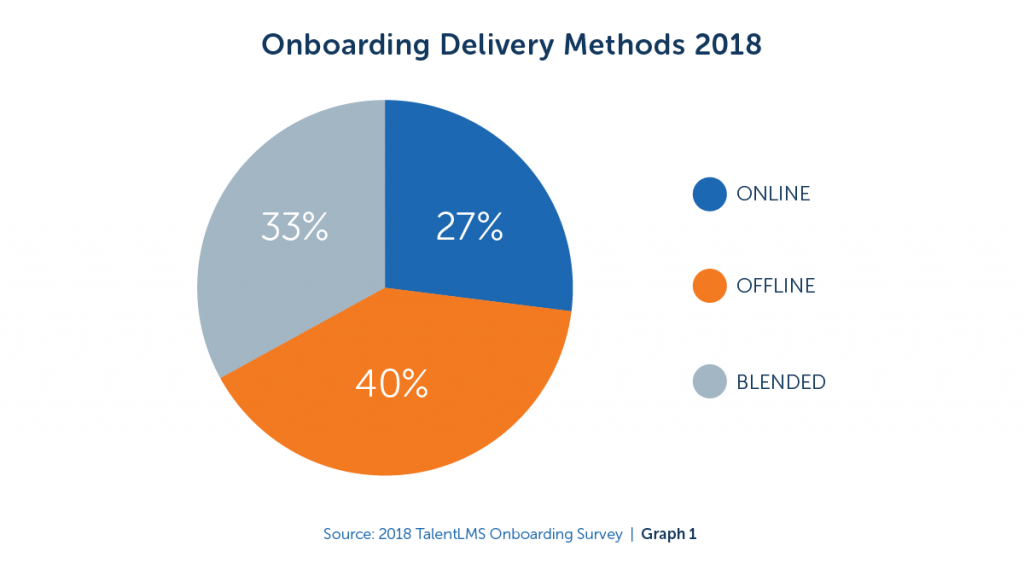
So what method should you choose for your company? Well, according to TalentLMS’ most recent study, employees who only received offline training had the lowest levels of satisfaction. Those who used blended methods were the most satisfied. More exactly, 28% of the new hires onboarded exclusively offline were not satisfied with the delivery method of their training. Of those who only received online training, 27% weren’t satisfied with the delivery method. In comparison, only 17% of the new employees who used mixed onboarding training haven’t been satisfied with the methods used for their onboarding.
These stats make it clear that new hires in 2018 prefer blended onboarding, using both online and offline training methods.
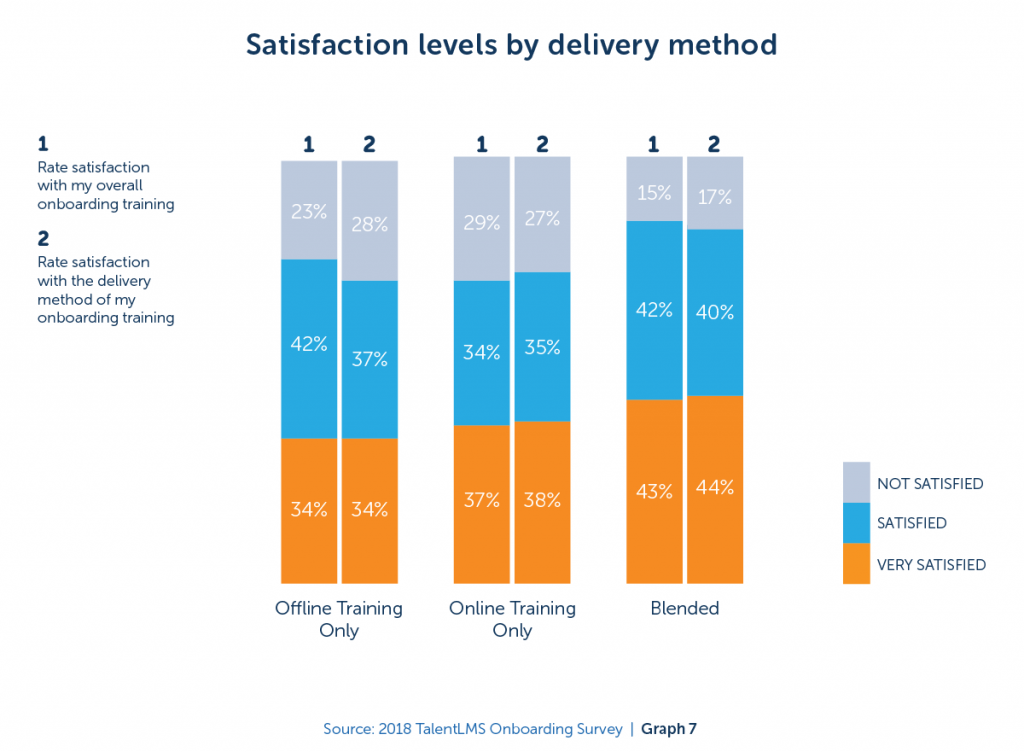
Also, don’t forget that people aren’t all the same. While some might do better with online training, others still prefer old-fashioned offline interactions. Therefore, blended methods 🙂
At Hubgets, when new people join our team, they are welcomed both face to face and on the Team Board, where they can meet everyone in an instance. Furthermore, one of the greatest perks of online onboarding via Hubgets is that new employees get access to company knowledge through previous discussions and shared files. There is no better way to get a more comprehensive understanding of the company and the team 🙂
Listen and address concerns
Research data indicates that new employees are more concerned to:
- learn the expectation of their supervisor
- fit in with the team
- find the information they need
than they are about technical issues and learning how to do their job.
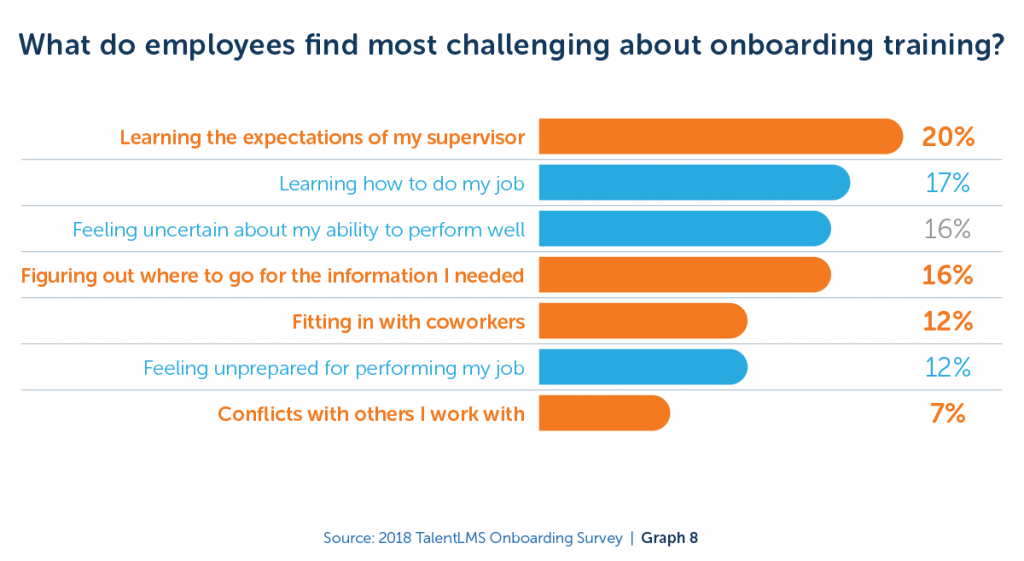
These findings should help you tailor the onboarding strategy of your company to address people’s concerns. Make sure you provide enough information, not only on technical matters, but also in terms of what is expected of them, and how to access resources.
Company culture training
The onboarding training should help new employees understand the structure, demands, and culture of the company. However:
- only 53% of new hires receive mandatory compliance training as part of the onboarding process
- 46% discuss the processes, procedures and business practices
- 41% receive training on technical and soft skills development
- and only 39% discuss the company’s culture, mission and values
This means that 61% of employees don’t get any training on company culture. This number is a bit perplexing considering today’s work place dynamics.
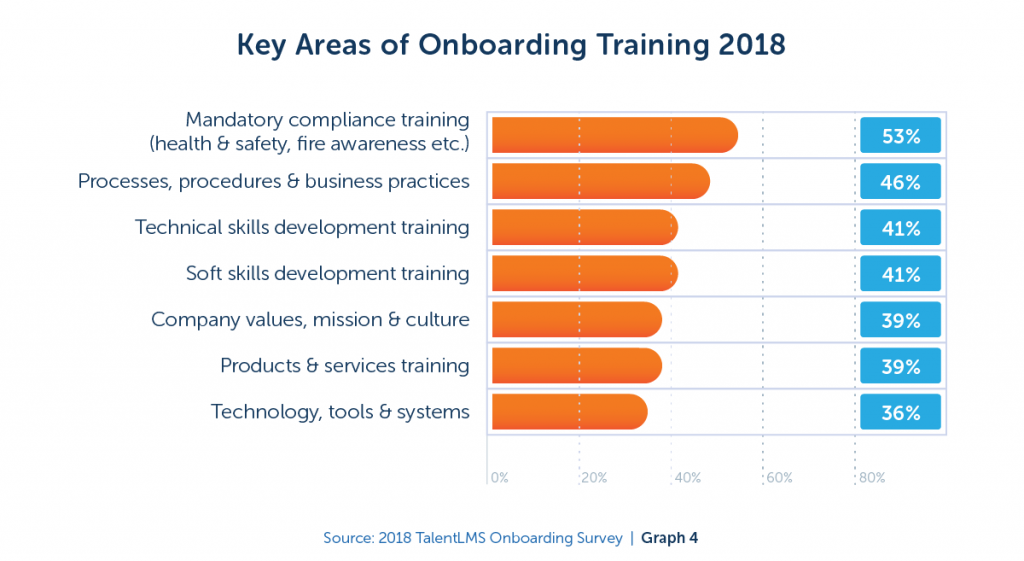
Including company culture topics into your company’s onboarding process has multiple benefits. First of all, it can help the new employee adjust their behavior and methods of interaction to fit in with their peers. But more importantly, it makes people feel that they are part of a bigger mission, that their work is meaningful. Considering the fact that meaningful work is more important for many people than paychecks and other benefits, including it in your onboarding strategy may actually make new hires happy and improve employee retention.
Reading about company culture is one thing, while identifying with it is something completely different. The best way for a new employee to understand the company culture is through getting a taste of it. Hubgets Team Board is the place that allows the team to freely discuss anything, socialize, and bond with each other. It’s the company’s new water cooler.
Give it enough time
At most companies (38%), the onboarding training lasts only one week. That is followed by 27% of companies devoting up to one month, 10% up to 3 months, 4% up to 6 months and only 1% allocating 6 months to 1 year. However, it is somehow worrying that 20% of companies offer onboarding training for just one day.
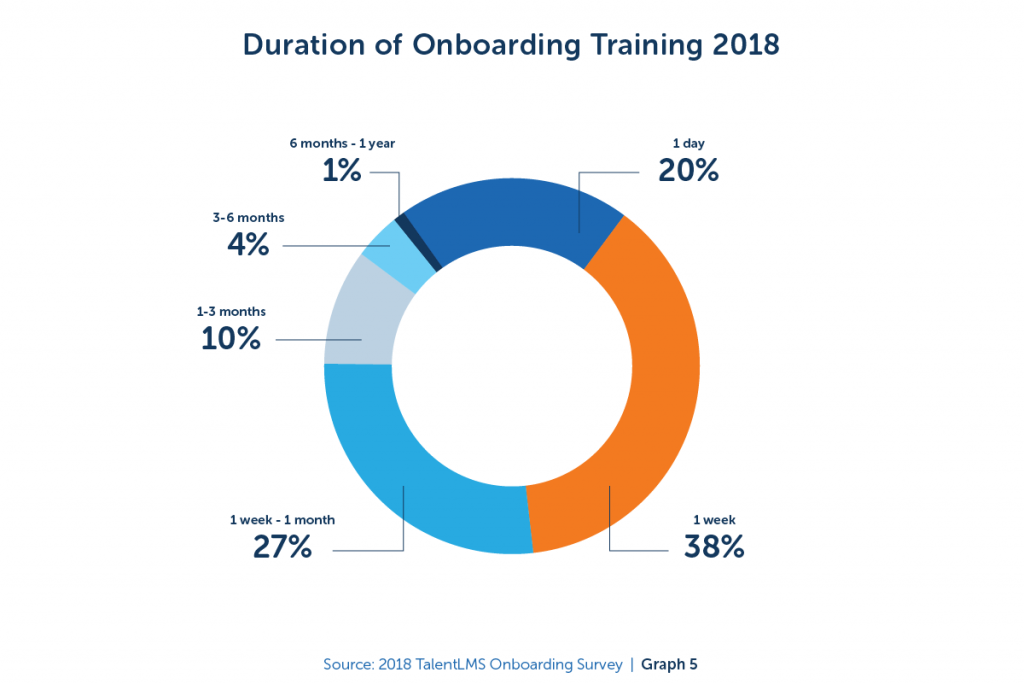
While there is no one-size-fits-all model when it comes to employees transitioning into a new company, research estimates that it takes six months up to one year for new employees to assimilate. The best way to figure out how long the onboarding process should be given is by asking for feedback from your current employees.
Involve management
As much as 15% of employees reportedly don’t meet their supervisors on their first day. These employees are more likely to be dissatisfied with their jobs and have a higher turnover. The overall onboarding satisfaction of new employees who have met their supervisor on day one is 41% – more than twice compared to the satisfaction of those who haven’t met the management on their first day.
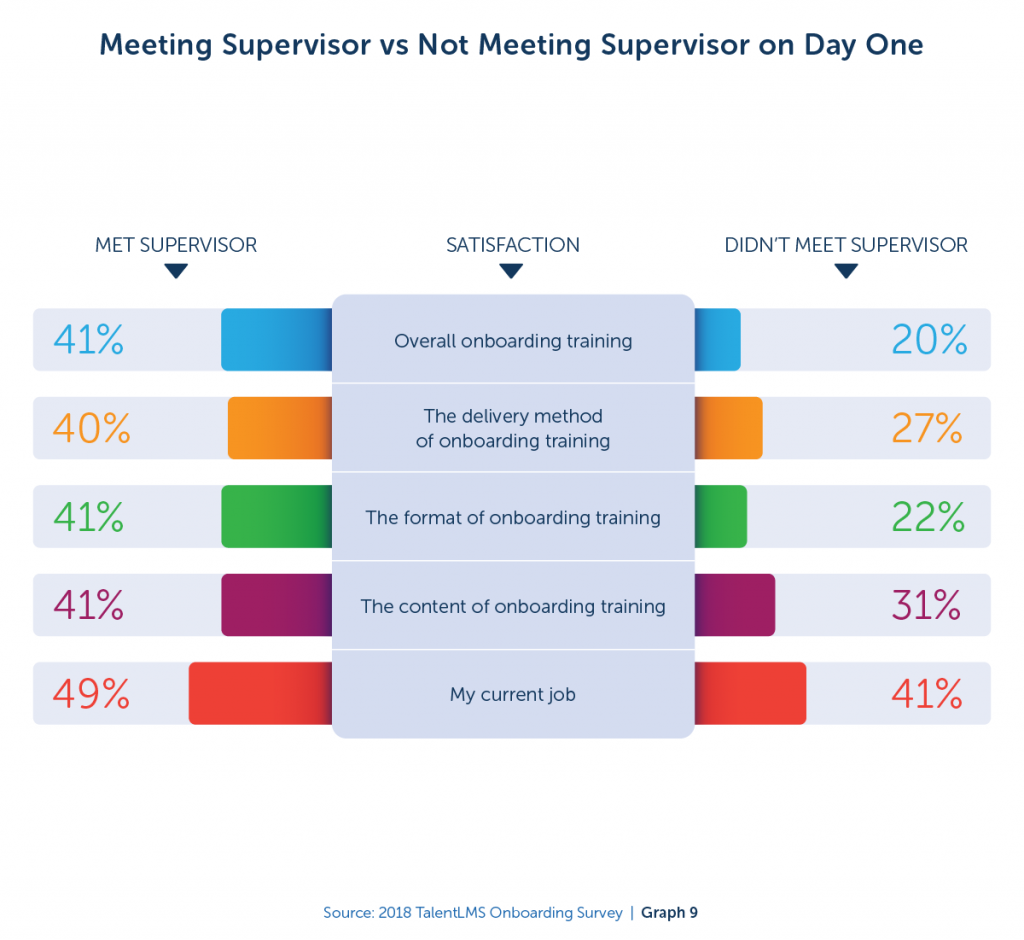
Therefore, one of the most important – and also easiest – things to do when onboarding a new hire, is to involve the management right from the beginning. Make sure the new employee has a good understanding of the organizational structure, and gets a handshake from their supervisor.
Make onboarding more efficient with Hubgets
Hubgets is a powerful team communication solution that can help your new employees accommodate faster and become more productive. Here are some of the ways it can make your onboarding process more efficient:
- Connect new employees with the entire team regardless of their location
- Provide instant access to company knowledge
- Make people part of discussions and decisions
- Save their precious time from pointless meetings
- Enable them to get a real taste of the company’s culture
And on top of that, new employees can get instant assistance and mentorship from an entire team of experts, not just one 🙂
Put employee needs at the center
Onboarding doesn’t have to be unproductive time spent in endless meetings or reading tons of documents. Companies have to adapt to the needs of their new employees, in order to achieve higher retention rates and a greater satisfaction.
On a growing work market that integrates more and more Millennials, using the same old methods that worked with Gen. X is totally unproductive. During the onboarding, new employees need to feel welcome, and find purpose for their efforts. It is important to tailor your strategy on individual needs and give new hires enough time to adjust to their new roles, and their new place. People need to know that they are valued, and thus managers should invest time in one-on-one meetings right from the beginning.
Most of the strategies discussed above require no extra costs for the company. Just a remodeling of the programs that are already in place, to correspond to the actual needs of new employees.
Do you know how satisfied your employees are with the onboarding program you are currently offering? Let us know in the comments section!
A special thank you to the TalentLMS team that created the What New Hires Want in 2018 study and for providing the graphs.
Post A Reply